by Nina Prader // Mar. 4, 2020
The information pamphlets were printed on neon-colored paper, the fonts were loud, projecting hieroglyphic codes for new design vernaculars. From February 20–23, the ‘Glossary of Undisciplined Design’ (GUD) symposium transformed the Galerie für Zeitgenössische Kunst (GfZK) in Leipzig into a temporary educational training ground. The event focused on queer-feminist discourse for design practices that color outside the lines, with a series of discussions, presentations, workshops and exhibition formats created for and by students, artists, designers and educators. “Undisciplined,” in this case, is not necessarily chaotic and wild, but describes an urgent alphabet of disobedience. Its power lies in renaming and redefining.
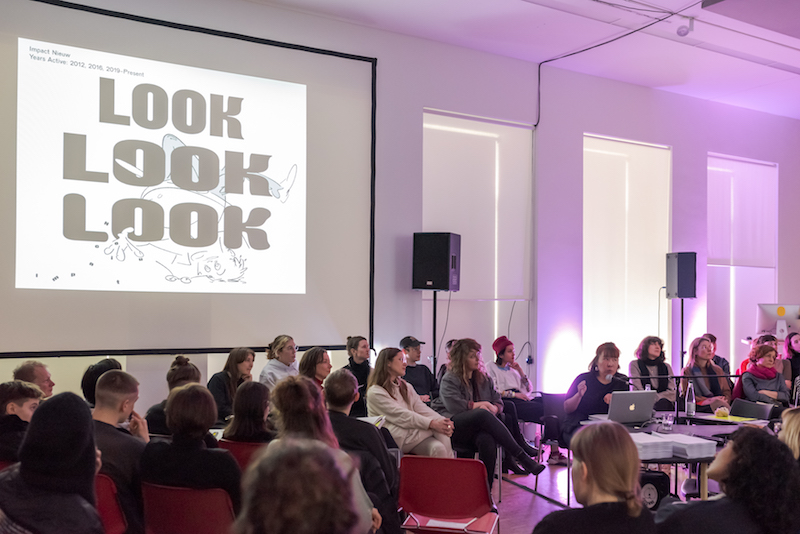
Symposium Glossary of Undisciplined Design, lectures, presentations and performances // Photo by Alexandra Ivanciu
The GUD project—initiated by Anja Kaiser and Rebecca Stephany—remapped design philosophy in the digital age. The glossary is a new alphabet of terms and memes, defying design lingo’s historic grid. Reclaiming all the dirty words—like “D for Dysfunctional workspace” or “S for Self-exploitation” and “R for Role-play”—the edutainment-style symposium exposed the political working conditions inherent in designing. GUD celebrated heroines of nonconformity, care and criticality in graphic design as well as contemporaries who work toward dismantling the Eurocentric and male-dominated historiography of design.
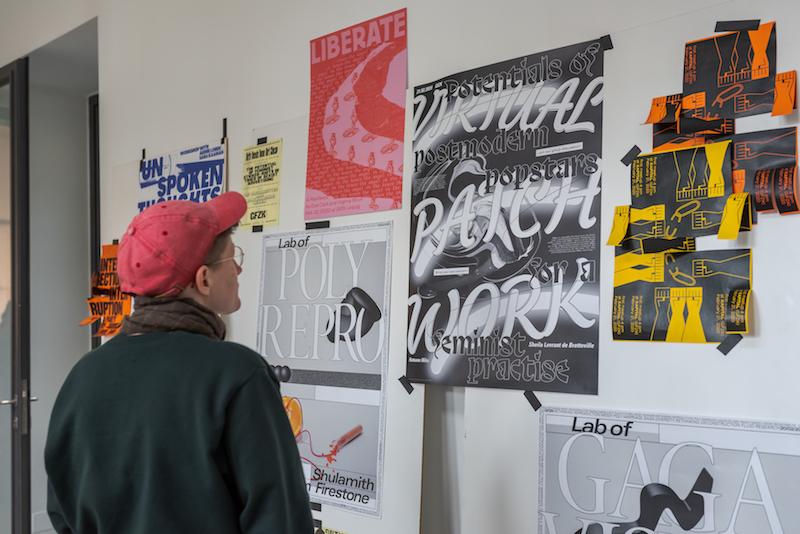
Symposium Glossary of Undisciplined Design, lectures, presentations and performances // Photo by Alexandra Ivanciu
The GUD symposium came together as a group of invited role models and potential allies. On the agenda: how to decolonize design and inject feminist attitudes into your typeface. It only takes two-dollars spent at the hardware store to make a feminist eyebolt necklace, according to Sheila Levrant de Bretteville, canonical feminist designer and co-founder of the famous public learning center, the Woman’s Building, in 1970s Los Angeles. The Woman’s Building was a place where prolific artists—such as Betye Saar, Judy Chicago and Phranc—were active. As the first female design professor at California Institute of the Arts, de Bretteville spoke about the successes and challenges encountered in learning spaces, from independent to university institutions, as well as the importance of public artworks, like her monument to the philanthropist Biddy Mason. Design is political and must reform public space. Her inspiration derives from poetry but the fundamental question of her practice was how to design horizontally, inclusively and bridge differences to break insular bubbles. Design should be a place to respond and extend a hand: indexes are placed as centerfolds, multi-lingual text and productive gaps inserted.
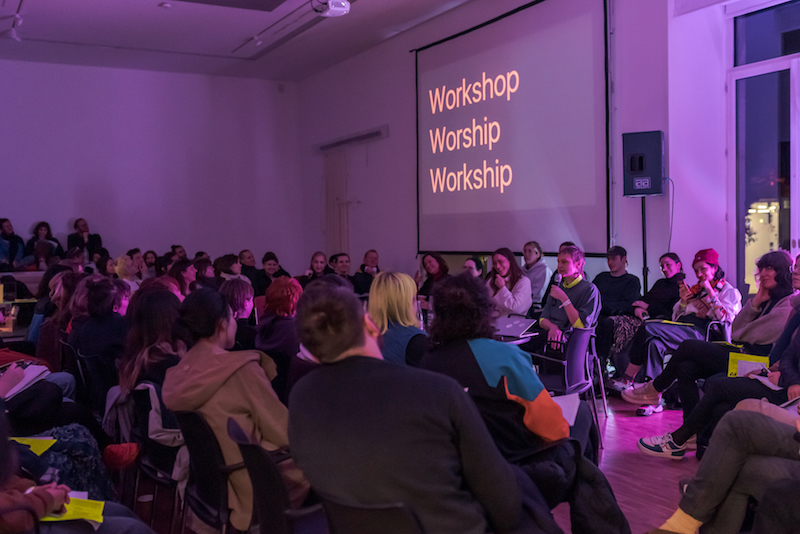
Symposium Glossary of Undisciplined Design, lectures, presentations and performances // Photo by Alexandra Ivanciu
Audre Lorde’s notion that new tools are required to dismantle oppressive systems was applied to the design world by one of the founding members of the Decolonizing Design Group, Ece Canlı. She walked us through the concrete strategies to unlearn accumulations of power. Design is inherently othering and complicit in creating the problem that materializes as the heteronormative, white, patriarchal social system. Violence is inherent in design, from the programs on our computers, the scanners at airports and the symbols gendering toilets to the fashion we wear. Canlı suggested that we create “monstrous tools” instead by embracing Frankenstein: interrupting, exposing, haunting, bothering, creating counter-memory, blurring boundaries, forming bonds of affinity, integrity and love. And to the privileged: step back and be of service. Design and publishing processes are interlinked. Here, they are unpacked through independent printed matters. In the reading ‘Publishing as Bloodletting,’ Clara Balaquer of Hardworking Goodlooking Studio & Publishing Hauz scripted a meta-chat conversation on culture-work and distributions of power.
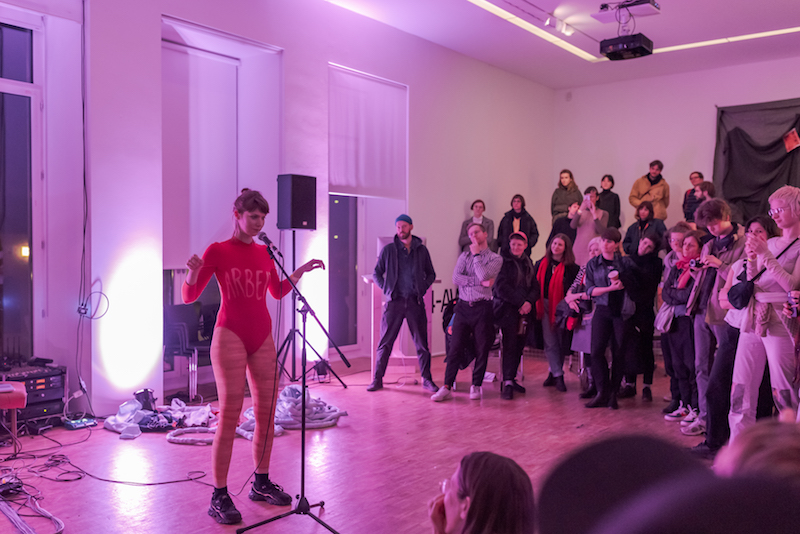
Symposium Glossary of Undisciplined Design, lectures, presentations and performances // Photo by Alexandra Ivanciu
What does messy design mean? Is it unreadable, or is it radical? What we learned is that punk amateurism can be more empowering than sleek professionalism and it is also sometimes bold to be fragile. As a whole, the symposium’s skill-share ethos was playfully academic, aesthetically and digitally ironic and laden with activist fervor. The GUD fosters a collective spirit to take these toolkits to the world, through workshops, guided tours and, eventually, a publication at the end of 2020. We left emboldened to design against the grain.
Artist Info
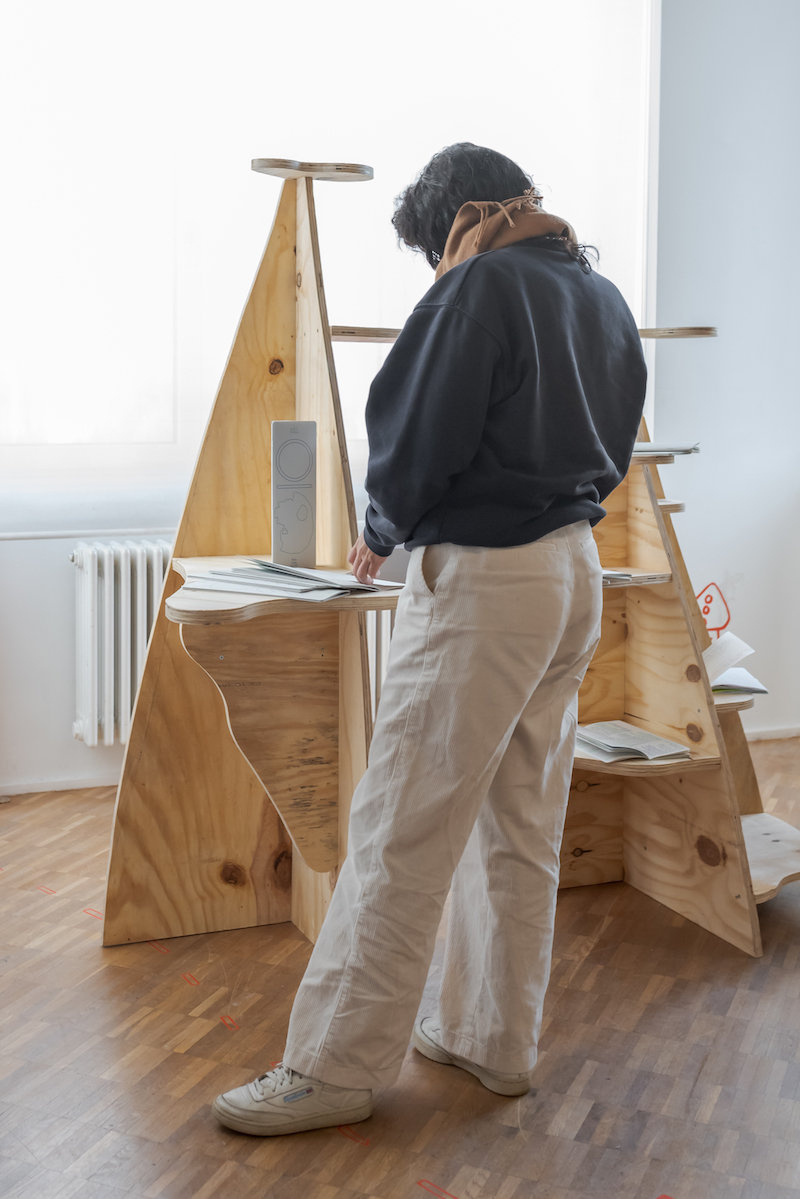
Symposium Glossary of Undisciplined Design, lectures, presentations and performances // Photo by Alexandra Ivanciu
























